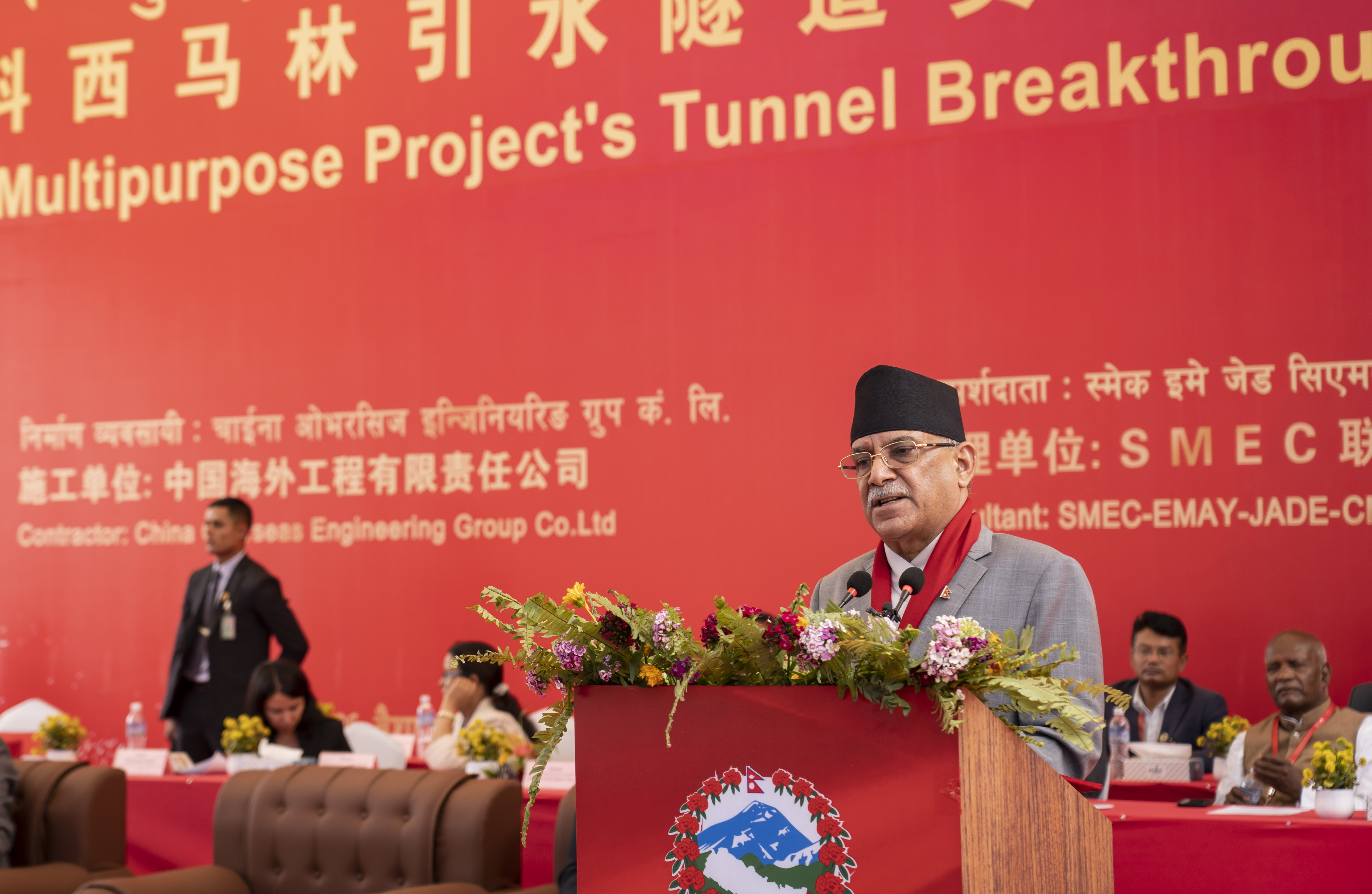
A 13.3-km-long irrigation tunnel has been completed in Nepal's Sindhuli district a year ahead of schedule, thanks to help from Chinese construction teams.
Wrapped up on May 8, the tunnel was constructed as part of the Sunkoshi Marin diversion multipurpose project. It was jointly undertaken by China Railway Second Bureau Group and China Overseas Engineering Group Company.
When fully operational, the tunnel will divert the Sunkosi River to the Marin River to irrigate 122,000 hectares of agricultural land in Barra, Tahat, Salahi and other areas, while the project also includes building a hydropower station with an installed capacity of 28.62 MW. This will provide 250 gigawatt hours of hydropower annually to alleviate the shortage of electricity in the surrounding areas.
Speaking at the inauguration ceremony, Nepali Prime Minister Pushpa Kamal Dahal hailed the tunnel as a "transformative national pride project." In his opinion, once the tunnel begins full operation it will improve irrigation facilities and bring economic opportunities. "The completion of such projects contributes to the country's national economy, productivity and prosperity," said Dahal.
Agriculture contributes a third of Nepal's GDP, but the Terai region, which accounts for 60 percent of Nepal's arable land, is short of water in winter and spring, and this project will help Nepal's economic development and reduce the trade imbalance caused by Nepal's large imports of agricultural products, according to the prime minister.
"Chinese enterprises have used their skills, wisdom and solutions, and cooperated with the technical personnel from Nepal to overcome all [construction] difficulties such as geological conditions, logistics problems and the long monsoon period, still finishing the project 12 months ahead of schedule, which shows the Chinese [construction] speed, with high quality and high standards," Chinese Ambassador to Nepal Chen Song said at the ceremony.
On June 22, the Sino-French satellite Space Variable Objects Monitor (SVOM) was successfully launched. Earlier, on May 3, China's Chang'e-6 lunar probe carried France's Detection of Outgassing RadoN to the moon, marking the first collaboration between the two countries in lunar exploration and France's debut in a lunar landing project. This year also celebrates the 60th anniversary of diplomatic relations between China and France, highlighting their longstanding cooperation in space.
Pushing the development of tech innovation is needed to achieve China's goal of becoming a leading sports nation by 2035, as well as becoming a modernized country.